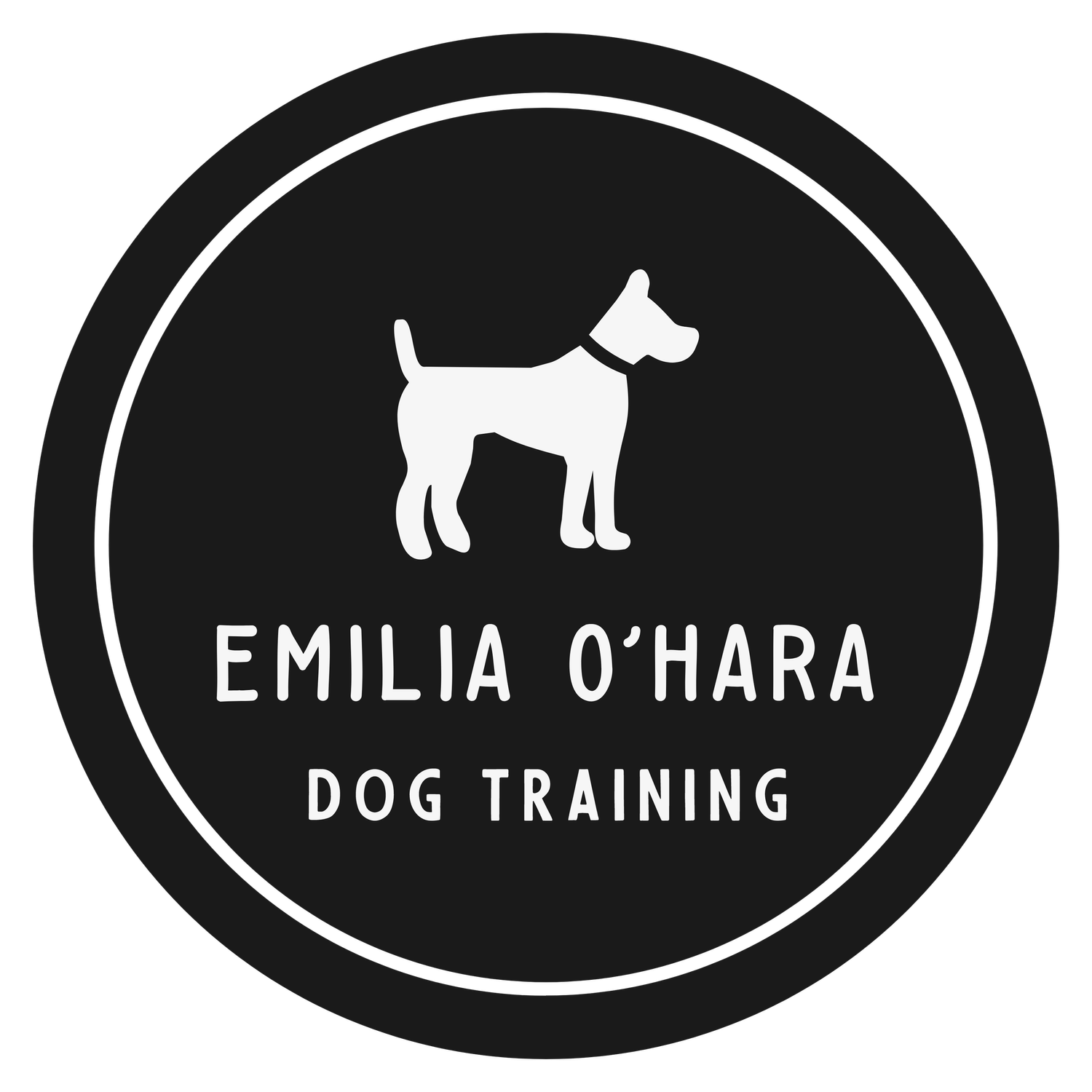How to Stop Dog Reactivity: A Calm, Effective Approach
If your dog barks, lunges, or growls at other dogs on walks, you’re not alone. Dog reactivity is one of the most common and stressful challenges owners face — but it can be changed with the right approach.
In this post, I’ll walk you through how to start dog reactivity training using a method called counter-conditioning, with real-life insights from training my own dog, Obie.
What Is Dog Reactivity?
Dog reactivity is an over-the-top emotional response to a trigger — often another dog, but it can also be people, wildlife, bikes, or cars. It’s usually driven by fear, anxiety, or frustration.
If your dog barks at other dogs, growls on the lead, or panics in public spaces, you’re likely dealing with a reactive dog.
My Experience: From Reactive to Relaxed
When I first got Obie, he was severely reactive. He’d bark, spin, lunge, and generally make walks really stressful. I felt judged, overwhelmed, and honestly — a bit hopeless.
But through a consistent, structured approach using counter-conditioning, Obie now walks calmly past other dogs. He can even be off-lead around squirrels and birds without reacting.
This transformation didn’t come from harsh corrections or flooding him with triggers. It came from changing the way he felt about his environment.
What Is Counter-Conditioning for Dogs?
Counter-conditioning is a powerful method used in dog reactivity training. It helps change your dog’s emotional response to a trigger from fear or excitement to calm anticipation of something good.
Instead of “Uh-oh, there’s a dog — panic!” your dog learns, “Oh, there’s a dog — that means cheese is coming!”
How to Stop Dog Reactivity Using Counter-Conditioning
Here’s how to get started:
✅ 1. Start at a Safe Distance
You want your dog to see the trigger but remain calm. If they’re barking, lunging, or stiff, you’re too close. Step back until your dog is under threshold and can still focus on you.
🧠 Tip: Your dog must be calm enough to learn. That means training starts farther away than you might expect.
✅ 2. Make a Sound and Toss High-Value Treats
Use a marker word like “Yes” or a clicker, then throw food (cheese, chicken, liver cake) in different directions on the ground.
This helps your dog associate being near you — even when a trigger is nearby — with positive things happening.
✅ 3. Lure for Focus
Get your dog to follow food in your hand, then reward. This builds engagement and sets you up for success when redirecting them from dogs, squirrels, or other distractions later on.
✅ 4. Mark & Reward After Trigger Glances
When your dog notices the trigger but doesn’t react, mark the moment and toss food. You’re reinforcing calm behaviour and slowly changing how they feel.
Each time they look at a dog → hear the marker → eat cheese, their brain is building a better association.
✅ 5. Stay Consistent & Go at Your Dog’s Pace
Don’t rush it. Reactivity doesn’t vanish overnight. Over time, your dog will begin to:
Look to you for guidance
Remain calm in the presence of triggers
Re-engage after brief distractions
What If My Dog Is Already Barking at Other Dogs?
If your dog is already reacting, you’re too close. Move them away from the trigger, wait for calm, and try again later from a greater distance.
Trying to stop reactivity with lead corrections, shouting, or forcing contact usually makes things worse. Instead, focus on building trust and creating positive associations.
How Long Does It Take to Stop Reactivity?
There’s no quick fix — but real, lasting change is possible. Progress depends on:
Your dog’s history and temperament
Your consistency
The environment you're training in
Some dogs improve in weeks. Others need months. What matters most is starting in the right way and staying the course.
You’re Not Alone — and You Can Change This
Helping a reactive dog is hard. But with the right approach, you can turn chaos into calm — just like I did with Obie.
If you're ready to get started and want expert guidance, I offer online training and support to walk you through it step by step.
💬 Need Help With Your Reactive Dog?
📞 Book a 1:1 Virtual Session with Me
🎥 Join My Online Monthly Program
🐕🦺 Follow me on Instagram for daily tips
Let’s change the story for you and your dog — together.
